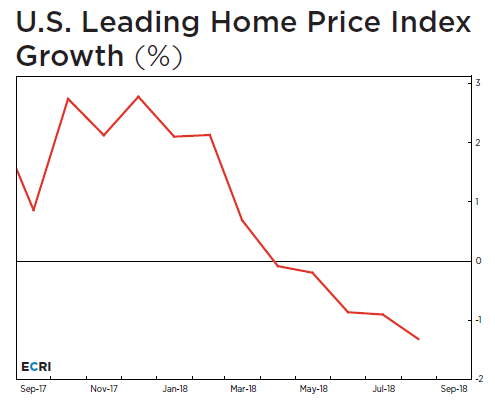Bonds Are Dead… Again?
Not trying to be a wet blanket here, but c’mon. Again?
Maybe the line I’m walkin’ needs to be crossed. Too early to say. The pros in this business who believe the 10-year Treasury yield must breach 4% are piling on to one side of the boat.
The contrarian in me along with several data points compel me to maintain a preference to remain on the lonely side of the ship.
Most likely what you’re witnessing is a peak in intermediate and long-term interest rates, not the start of something big.
I share several reasons for my logic.
Most important, do not, I mean do not, get swayed by talking financial heads who warn that stocks will be the big winner when rates rise and bonds the loser. Simply, if rates rise too rapidly anywhere along the yield curve, stock prices will fall off a cliff while bond prices will slowly roll down a hill.
Why have rates possibly hit their zenith?
Consider the over-indebtedness of governments, corporations (corporate debt now stands at 45% of GDP), households, inflation as measured by the Dallas Fed’s Trimmed Mean PCE right at 2% – in union with the Fed’s nebulous target, and the ominous danger signs coming from housing – a leader of economic activity & forefront in a consumer’s “feel good” sensors of the psyche. Quite frankly, the economy just cannot handle rates much higher from here.
Recently, growth in the Economic Cycle Research Institute’s U.S. Leading Home Price Index turned in its worst reading since 2009. ECRI’s Index was spot on nailing the early stirs of the housing crisis in 2006.

According to ECRI’s head honcho Lakshman Achuthan, home price growth is set to fall in a sustained cyclical downturn.
Let’s not forget demographics. The U.S. population is aging which puts a lid on how high inflation-adjusted interest rates can go. If anything, there’s a point where older investors will seek to trim their stocks to capture juicer income yields from bonds.
Per research by the Federal Reserve Bank Of San Francisco:
Investors lament – “My bonds are losing money!” Wait: Are they? Not so simple.
First, bonds may have lost their mojo as far as price appreciation. I’ll concede that point. However, they’re far from dead. Generally, the income and diversification from high-quality and Treasury bonds act as buffers to portfolio volatility, especially through periods of significant corrections or bear markets in stocks.
Second, dig deeper into what appear to be capital losses on bonds. If you own almost any type of fixed income investment whether a mutual fund or individual bond, you’re witnessing negative numbers (losses in brackets), or online – a sea of red. Don’t panic. Don’t assume you’re losing money. Dig deeper.
If you own a bond and seeking to hold to maturity, ignore the paper losses. Unless planning to sell before maturity, a return of principal is in your future. Consider the return on the bond the yield or income being paid on the investment.
Last, if you own a bond mutual fund like most of us do in our company retirement plans, you’re going to need to play Columbo, or detective when it comes to isolating investing reality from observed losses. Recently, a friend of mine reached out. He was stressed that he “lost” $3,000 on his bond fund so far this year according to the information retrieved from his company’s retirement plan portal.
I helped him break it down.
Yes, he indeed was down $3,000. His investment of roughly $53,000 in the bond fund began the year at approximately $56,000.
When digging in and isolating his original investments vs. monthly income generated (and reinvested back into the fund), we discovered $41,000 was the sum of hard-earned money he placed in the fund, $13,000 was income and appreciation. So, on the surface, was $3,000 a reduction in the overall balance in the fund? Yes. Was he losing principal at this juncture? No.
Also, keep in mind, as bond mutual fund prices fall, yields should increase. As bonds mature, a portfolio manager should be investing new dollars in higher-yielding bonds or swapping into bonds with more attractive yields.
As my buddy is convinced rates “must go higher because the news tells him so,” I had him exchange into a fund with less interest rate sensitivity.
For investors like him who remain concerned about an increase in rates, a chance to control interest risk by shortening duration (think ultra-short or short-term bond funds), is at hand. If yields retrace and bond prices commensurately increase, it should provide a window of opportunity to swap longer duration positions with shorter duration alternatives.
Or, ask your broker for the latest rates on certificates of deposit. It’s like a candy store for conservative investors or savers out there. Yes, your broker should have access to CDs from major financial institutions, so no need to spend lots of time shopping around. For example, I discovered one-year CDs paying 2.3%, 2.8% for two years. At the end of the terms, principal is returned. These vehicles are FDIC-insured and pay interest monthly, semi-annually, or at maturity.
Bonds aren’t dead. Bonds are an important part of your portfolio. At 34X earnings for stocks, the last action a rational investor should take here is to dramatically reduce bond exposure to purchase stocks.
If you’re an investor with a primal brain who gets frustrated by investment account balances from month to month, doesn’t see progress, believes you’re missing out on the stock party and makes changes without regard to risk attitude, the current breakdown in housing and other cyclical stocks and current valuations, then frankly, you deserve what’s coming to you.
And it’s not going to be pretty.



